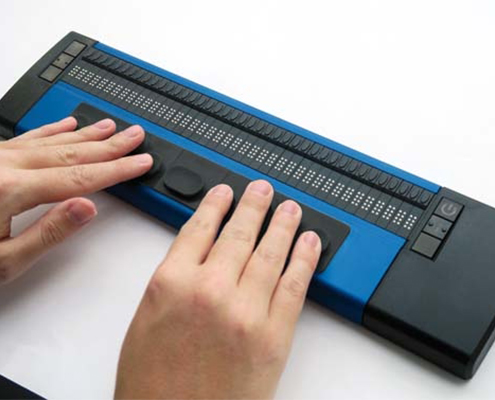Refreshable braille display

In the era of technologies everyone should be provided with access to computer. One of the most challenging innovation is providing access to blind people by transmitting information from the screen to an adaptive device.
Braille display is a peripheral device that allows blind or visually impaired people to interact with a computer. A braille monitor uses the braille system that blind people use to read. Raised dots spell out text that the user traces a finger over to read

In 1995 Handy Tech Braille display in combination with a screen reader makes Microsoft Windows accessible for blind users. Later in 2005 Easy Braille, a super compact Braille display as well as Sophie, the reading system with a natural sounding voice, and Sophie Pro an extended Version of the Sophie, were introduced.
Software
The content of a page is taken from the OS, after it proceeds to be converted into braille characters and sends it to the display. Most of displays are connected via USB, some models have Bluetooth. Modern operation systems have an API for converting content (e.g. UI Automation for Microsoft Windows).
The cost of the display rices up to 15k. Budget models start from around 1300$. The cost depends on number of Braille cells (from 40 to 120). It may have include time-saving features such as Bookworm mode which scrolls pages automatically. On an ordinary Braille display users have to push the advance button about 20.000 times for reading the book completely.
Comments
Post a Comment